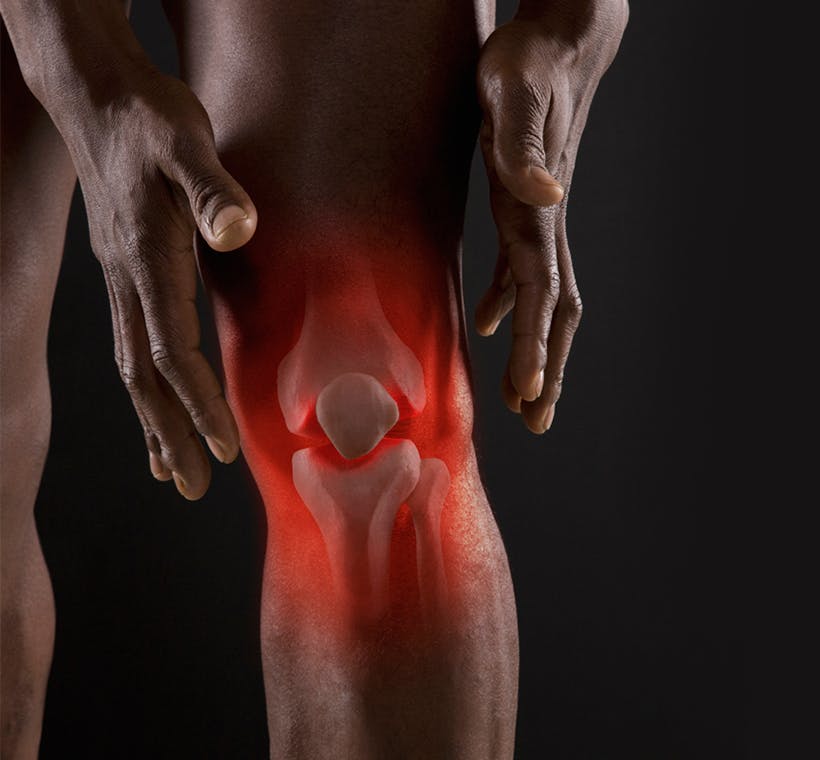Joint Pain And Arthritis: Common Causes of Joint Pain

Common causes of joint pain
Almost everyone has joint pain in some part of their body, at some point in their lives. Joint pain can affect just one joint or many, and can be caused by arthritis, injury, overuse, or bursitis (an inflammation or irritation of the bursa, a fluid-filled sac that acts like a grease to reduce friction), and many different illnesses and conditions.1 Finding the cause of joint pain is an important part of finding the right treatment.
Illness
Joint pain often occurs as one of the symptoms of an illness including:1
- The flu (influenza)
- Epstein-Barr virus (a type of herpes virus)
- Lyme Disease (a bacterial infection transmitted by a tick)
- Dengue (hemorrhagic) Fever (a viral infection resulting from a bite from a mosquito carrying the virus) or other tropical fevers
- Measles
- Mumps
- Chicken pox
- Hepatitis (inflammation of the liver caused by an infection or toxic agent)
Injury
Where joint pain follows an injury, it will be simple to identify the cause and the moment when the pain began. If the pain is severe, or lasts longer than three days, the injury should be evaluated by a physician. X-rays may be required to determine if the pain is from a strain, sprain, tear, or fracture. The doctor may also refer the case to a specialist in injuries to bones and joints, called an orthopedist or orthopedic surgeon.
Overuse
Inflammation and pain in a joint can also be caused by overuse of the joint, such as doing one repetitive activity (tennis, painting, running, typing, video games, etc.) for a long period of time.2 Sometimes this causes joint inflammation and pain, and sometimes bursitis.3 The bursa normally reduces friction between moving body parts, but can become inflamed and painful with overuse.3
Arthritis
Arthritis is a common cause of joint pain. There are more than 200 different types of arthritis,4 all involving damage to cartilage – stiff yet flexible tissue that also gives shape to your nose and ears. Cartilage normally covers the ends of bones where they meet to form a joint. Healthy cartilage allows bones to glide smoothly over one another with movement. But when cartilage is damaged or worn away, the bones rub together causing pain, swelling, and loss of joint mobility.4
Osteoarthritis is the most common form of arthritis.2,5 It affects only joint function, and causes pain, limited joint mobility, and, over time, possible joint deformity.2
Rheumatoid arthritis is the second most common type of arthritis6 and is characterized by pain and inflammation. Rheumatoid arthritis is an autoimmune disease, meaning that the body actually attacks and breaks down its own tissues.6 In addition to joint pain and loss of function, rheumatoid arthritis can affect the skin, lungs, eyes, and/or blood vessels. It may also make people feel generally tired, run-down, sick, and feverish.7
When it comes to long-term joint pain, the best approach is to work with health professionals to develop a lifelong pain management plan. This can include monitoring nutrition and exercise habits, as well as taking medications. Keeping a positive outlook and focusing on personal strengths and abilities can also help life return to normal, while keeping joint pain to a minimum.
References
- Joint pain. Medline Plus. http://www.nlm.nih.gov/medlineplus/ency/article/003261.htm
- Arthritis Care UK. Living with Osteoarthritis Booklet. November 2009
- Bursitis. Mayo Foundation for Medical Education and Research. Available at http://www.mayoclinic.com/health/bursitis/DS00032/DSECTION=causes
- Arthritis Care UK. Understanding Arthritis Booklet.
- Zhang W, et al. OARSI recommendations for the management of hip and knee osteoarthritis, Part II: OARSI evidence-based, expert consensus guidelines. Osteoarthritis Cartilage, 2008; 16: 137−162. Available at: http://www.oarsi.org/pdfs/oarsi_recommendations_for_management_of
_hip_and_knee_oa.pdf - Arthritis Care UK. Living with Rheumatoid Arthritis. Booklet April 2010.
- Rheumatoid Arthritis. Medline Plus. Available at http://www.nlm.nih.gov/medlineplus/ency/article/000431.htm




